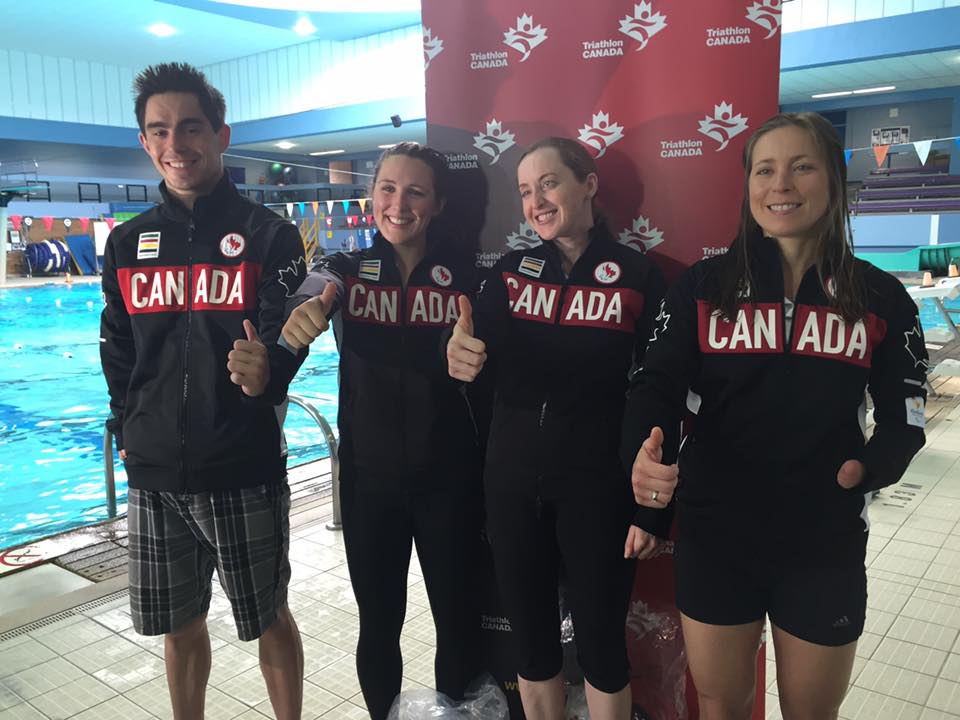Rio 2016 Paralympic triathlon: Everything you need to know

Triathlon makes its debut at the Paralympic Games in Rio this week. For the first time in history, the world’s best paratriathletes in five categories will face off against each other and represent their country in hopes of being named Paralympic champion.
For triathlon fans eager to watch these exciting races and the four talented Canadians with medal potential, here’s everything you need to know about watching paratriathlon at Rio 2016.
Sport Class Explanation
The Paratriathlon classification system was reformatted in 2014, reducing the number of sport classes from seven to five. While it is only the men’s PT1, PT2 & PT4 sport classes, as well as the women’s PT2, PT4 & PT5 sport classes that will race in Rio, below find an explanation of each sport class.
PT1 – Wheelchair users. Includes athletes with comparable activity limitation and an impairment of, but not limited to: muscle power, limb deficiency, hypertonia, ataxia, athetosis that prevent the ability to safely ride a conventional bike and run. Through classification assessment, athletes must have a score of up to 640,0 points. Athletes must use a recumbent handcycle on the bike course and a racing wheelchair on the run segment.
PT2 – Includes athletes with comparable activity limitation and an impairment of, but not limited to, limb deficiency, hypertonia, ataxia and or athetosis, impaired muscle power or range of movement that through classification assessment have a score of up to 454,9 points. In both bike and run segments, amputee athletes may use approved prosthesis or other supportive devices.
PT3 – Includes athletes with comparable activity limitation and an impairment of, but not limited to, limb deficiency, hypertonia, ataxia and or athetosis, impaired muscle power or range of movement that through classification assessment have a score from 455,0 to 494,9 points. In both bike and run segments, the athlete may use approved prosthesis or other supportive devices.
PT4 – Includes athletes with comparable activity limitation and an impairment of, but not limited to, limb deficiency, hypertonia, ataxia and or athetosis, impaired muscle power or range of movement that through classification assessment have a score from 495,0 to 557,0 points included. In both bike and run segments, the athlete may use approved prosthesis or other supportive devices. Canada’s Stefan Daniel and Chantal Givens compete in this category.
PT5 – Total or Partial visual Impairment (IBSA/IPC defined sub-classes B1, B2, and B3): Includes athletes who are totally blind, from no light perception in either eye, to some light perception but unable to recognize the shape of a hand at any distance or in any direction (B1) and partially sighted athletes with a visual acuity of less than 6/60 vision or visual field less than 20 degrees with best corrective vision (B2-B3). A guide from the same nationality and gender is mandatory throughout the race. Must ride a tandem during the bike segment. Canada’s Christine Robbins and guide Sasha Boulton compete in this category.
When to watch
Men compete on Saturday, September 10th and Women compete on Sunday, September 11th. Stefan Daniel races at 9 AM EST Chantal Givens competes at 9 AM EST and Christine Robbins and Sasha Boulton compete at 10:20 EST.
